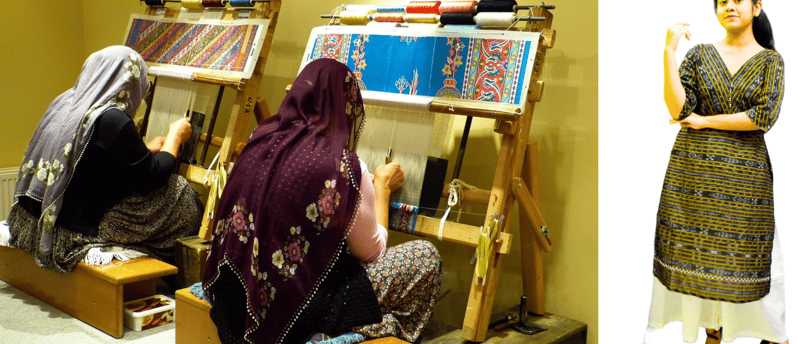How to Identify Authentic Handloom Products: A Buyer’s Guide
Handloom products are more than just cloth—they represent India’s rich cultural heritage, the skill of our weavers, and centuries of tradition. But today, with so many machine-made copies in the market, it can be hard to tell what’s real and what’s not. In this guide, we’ll show you simple ways to identify genuine handloom items and explain why choosing authentic handloom is so important.
INDIAN HANDLOOM
Avaran Vani
5/19/20253 min read


Handloom products are more than just cloth—they represent India’s rich cultural heritage, the skill of our weavers, and centuries of tradition. But today, with so many machine-made copies in the market, it can be hard to tell what’s real and what’s not.
In this guide, we’ll show you simple ways to identify genuine handloom items and explain why choosing authentic handloom is so important.
1. Know What ‘Handloom’ Means
Handloom fabric is woven by hand, not by machines. Skilled artisans use a hand-operated loom to create each piece. That’s why:
No two handloom items are exactly alike.
Each piece may have small variations—that’s a good sign!
It takes time, patience, and skill to make handloom
📌 Example: A Kanchipuram silk saree or Sambalpuri cotton saree made on a handloom will always have slight differences in motifs or borders—no machine can replicate that human touch.
2. Look for Small Irregularities in the Weave
Real handloom fabric is not perfect—and that’s what makes it beautiful. Here’s what to check:
Tiny bumps or gaps in the weave
Slight color differences
Uneven edges or borders
These are not defects. They show that the fabric was made by a real person, not a machine.
👀 Tip: Hold the fabric against the light—you may see threads overlapping unevenly. That’s a sign of handloom!
3. Check for the Handloom Mark
In India, the Handloom Mark is an official symbol that guarantees a product is genuinely handwoven. It’s issued by the Ministry of Textiles.
🪡 Tip: Always ask the seller if the product has the Handloom Mark.
✅ At our store, all our products come from certified weavers and carry this mark wherever applicable.
4. Feel the Fabric
Handloom fabric usually feels different from machine-made cloth. It’s often:
Softer and more breathable
Slightly uneven in texture
Cooler and lighter on the skin
✋ Try This: Run your fingers across a Sambalpuri cotton kurta or handloom dupatta and compare it with a powerloom version—you’ll immediately feel the natural texture and softness.
5. Notice the Design Details
Machine-made fabrics are perfectly symmetrical. Handloom is not. Look closely at: Borders or motifs—do they have tiny differences? Complex patterns—are they slightly varied? These differences show the human touch behind the fabric.
🎨 Example: In a Sambalpuri saree or cloth, which often features traditional motifs like shells, wheels, or flowers (shankha, chakra, phula), you may notice slight variations in design alignment. That’s a hallmark of true hand-weaving.
6. Ask About the Artisan or Weaving Origin
Real handloom sellers often know where the fabric comes from and who made it. Ask questions like: Which state or village is this from? What material is used—cotton, silk, jute, or wool? Is it made by a cooperative or a local artisan?
💬 Why It Matters: When you know the story behind the fabric, it becomes more than just a piece of cloth—it becomes personal.
🧵 Example: Ask about a Sambalpuri saree—you might learn it was made in western Odisha by an artisan who learned the craft from generations before him.
7. Check the Price—But Be Smart
Handloom is made by hand, so it's usually more expensive than machine-made items. But remember: A very low price can be a warning sign Quality handloom is an investment—it lasts longer and supports livelihoods
💡 Tip: Compare prices with trusted handloom hubs like Bhuj (Bandhani), Pochampally (Ikat), Maheshwar (silk-cotton), or Sambalpur (traditional cotton and silk ikat). All these regions are known for genuine handwoven textiles.
🌿 Conclusion: Buy with Awareness, Wear with Pride
Choosing handloom is not just about fashion—it’s about respecting heritage, supporting artisans, and celebrating Indian craftsmanship.
At our store, we bring you 100% authentic handloom products, directly from certified weavers across India—including iconic weaves from Sambalpur, Odisha.
🧵 Discover timeless handloom creations on this store—each one crafted with care and cultural pride.
